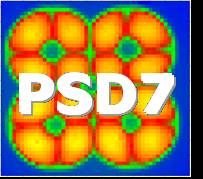Speaker
Laura Nelson
(University of Liverpool)
Description
Nuclear structure studies utilizing the technique of gamma ray
spectroscopy requires the use of state of the art detector systems.
The advent of highly segmented High-Purity Germanium detectors and
the method of Pulse Shape Analysis to determine the positions of
interactions [1] will allow for greatly improved efficiency as well
as excellent angular resolution. The Advanced Gamma Tracking Array
(AGATA), when completed, will consist of 180 of these large volume,
36-fold segmented HPGe detectors mounted in a spherical geometry to
cover the full solid angle [2]. Advanced digital electronics
developed especially for this application will be utilized.
Detailed scans of the AGATA prototype detector have been performed
using a precision scanning table and a fully digital data
acquisition system at the University of Liverpool in order to
characterise the detector’s response and its position sensitivity.
Comparison of this data to theoretical results from electric field
simulation software (MGS) [3] is paramount to the completed array’s
functionality as it will provide a method of matching the induced
pulse shapes, using a least squares fit technique, to a specific
position of interaction for the entire array. This position
resolution will be of the order of a few millimetres, as image
charge shape and asymmetry differ substantially between interaction
positions of this order.
Preliminary results show that the detector is capable of producing
such position sensitivity and the comparison of experimental and
theoretical data sets shows excellent agreement. A summary of the
methods used and up-to-date results of this ongoing analysis will be
presented.
References
[1] Svensson C.E. Position sensitivity of the TIGRESS 32-fold
segmented HPGe clover detector. Nuclear instruments and methods A,
2005: 540: 348-360.
[2] Gerl J, W Korten. Technical proposal for an Advanced Gamma
Tracking Array for the European gamma spectroscopy community. 2001.
[3] Medina P, Santos C, Villaume D. A simple method for the
characterization of HPGe detectors. IRes.
Primary author
Laura Nelson
(University of Liverpool)




